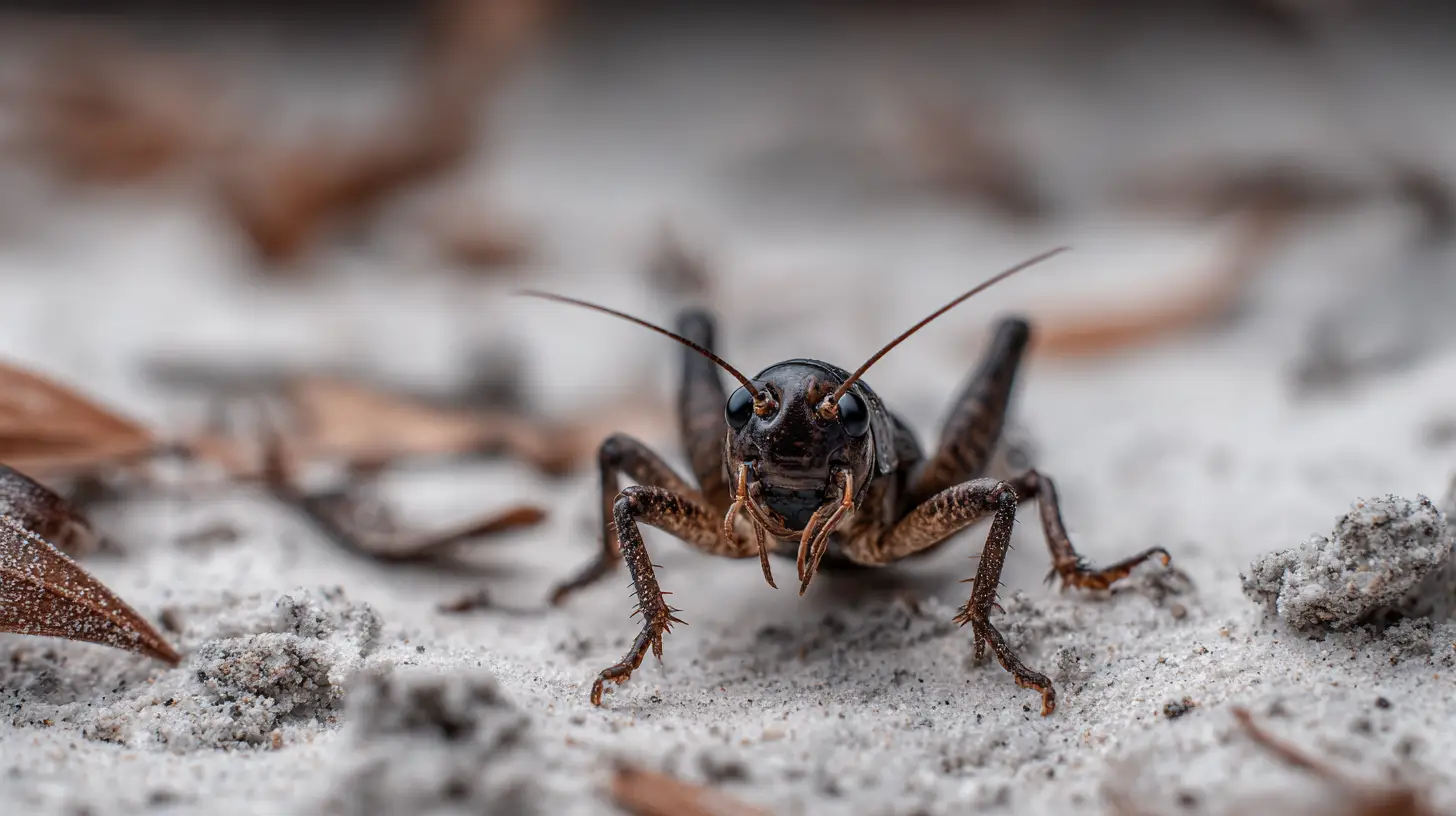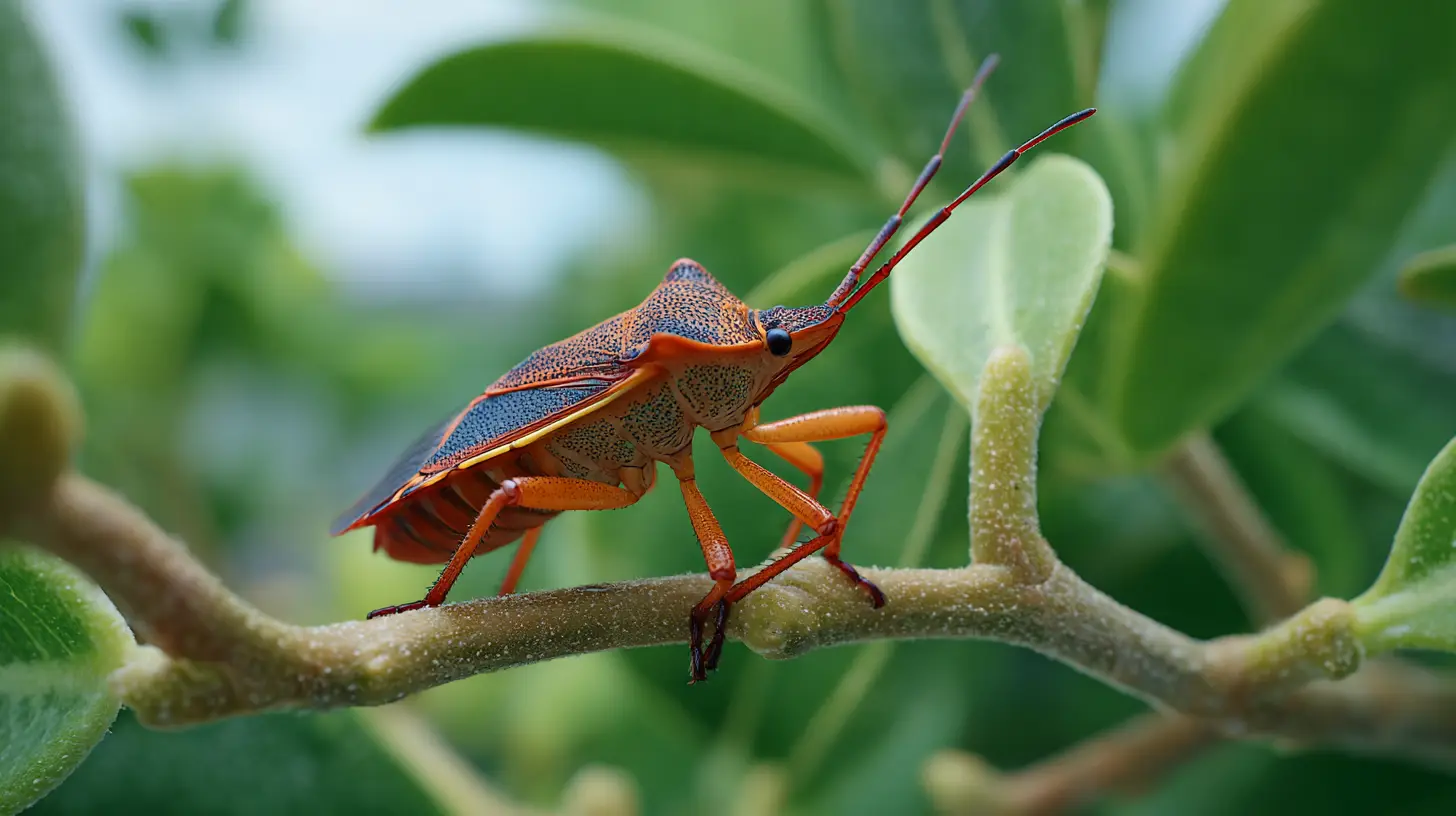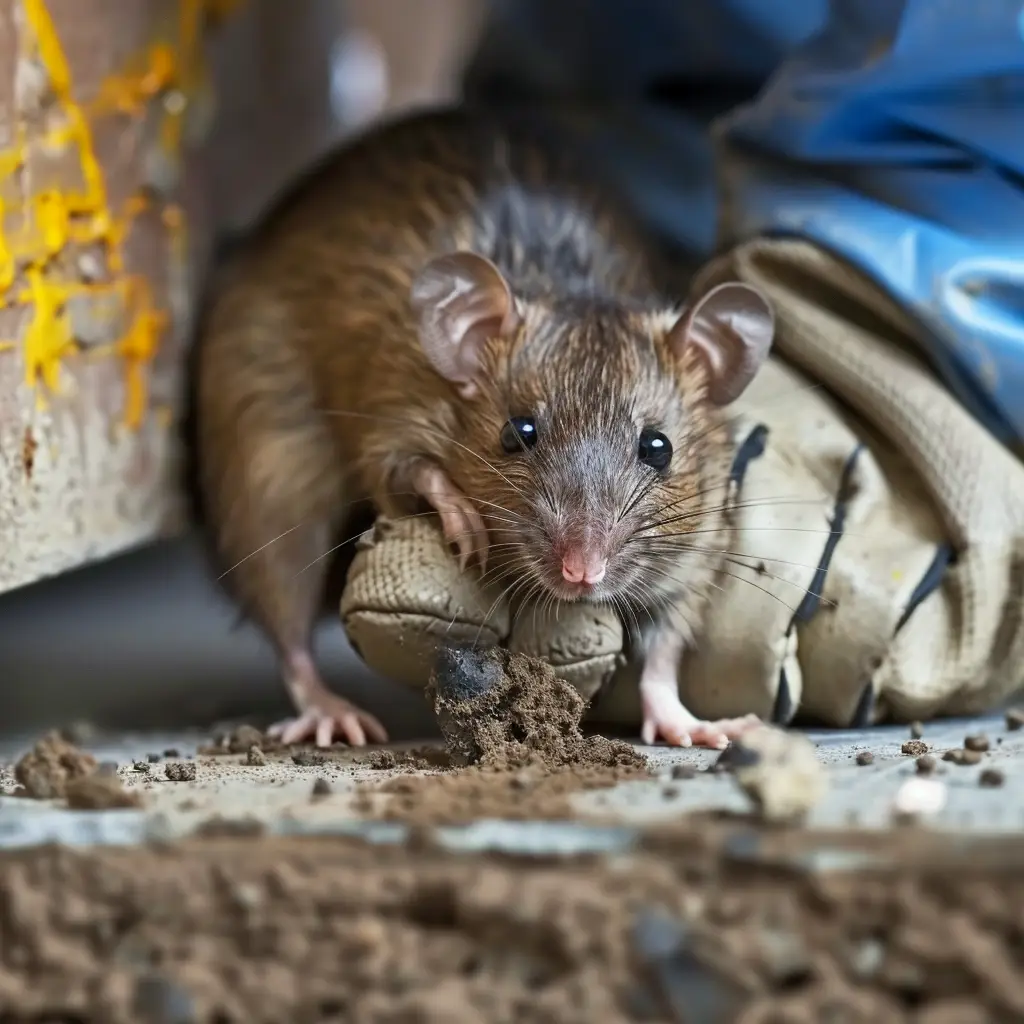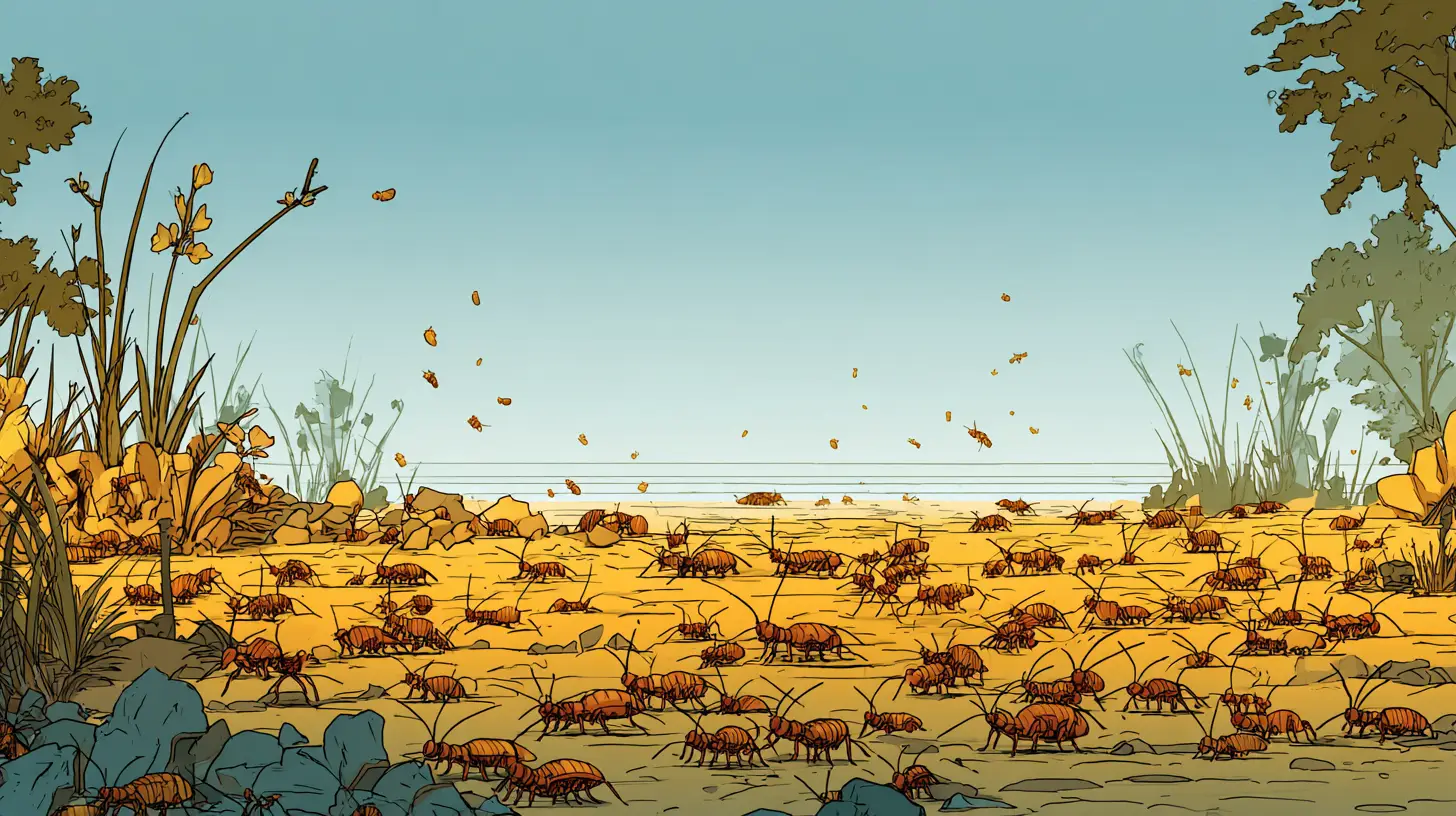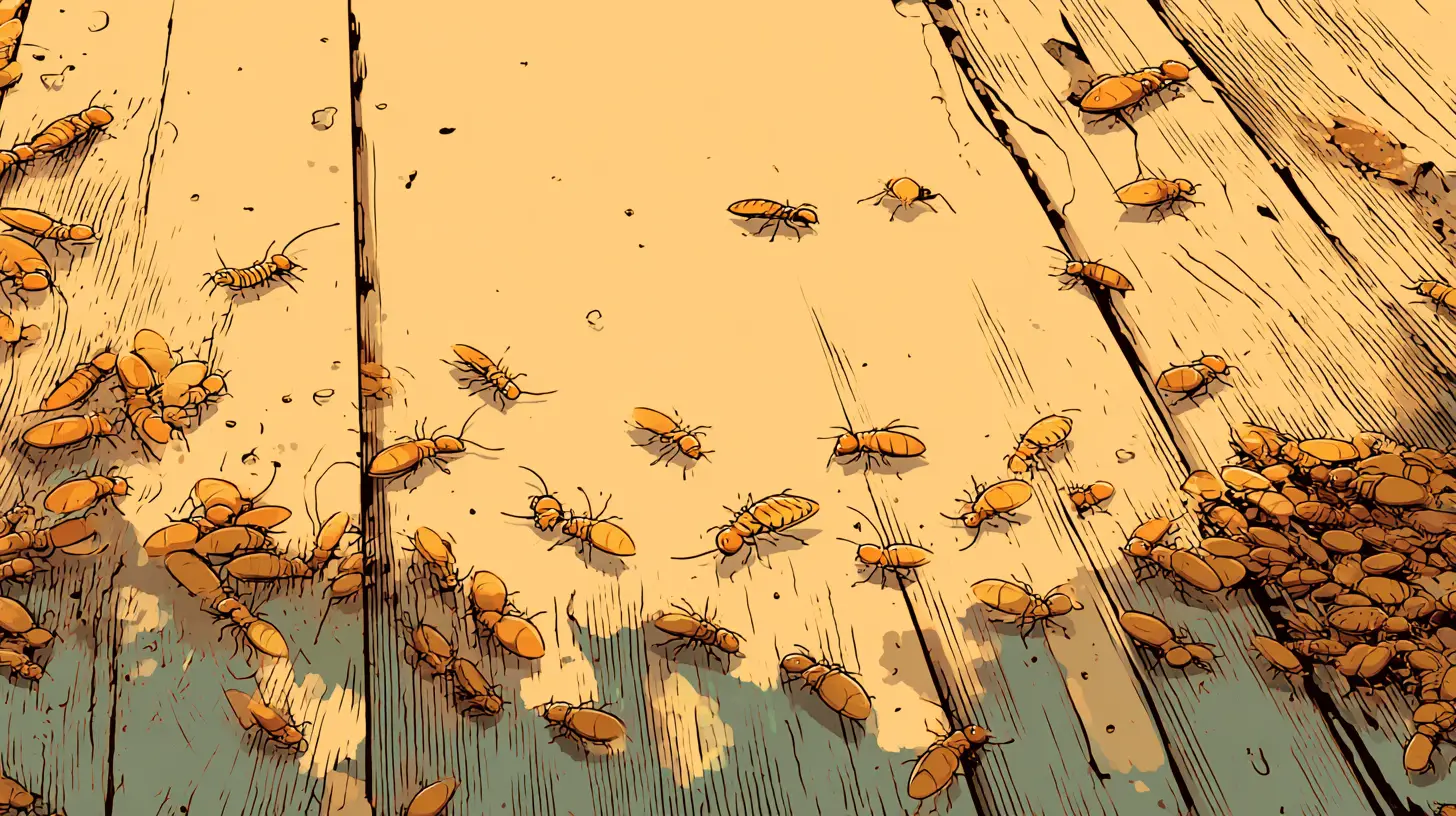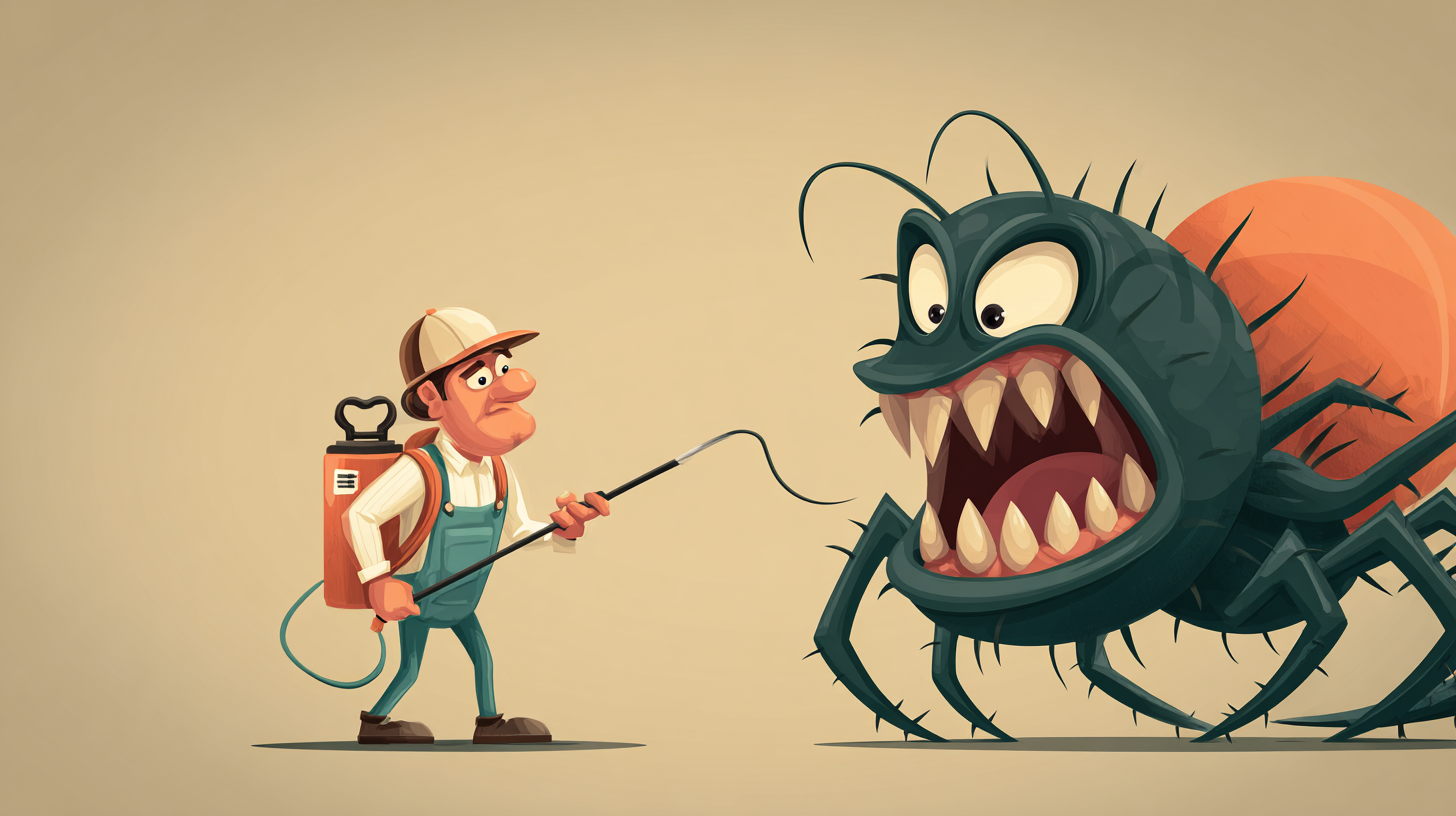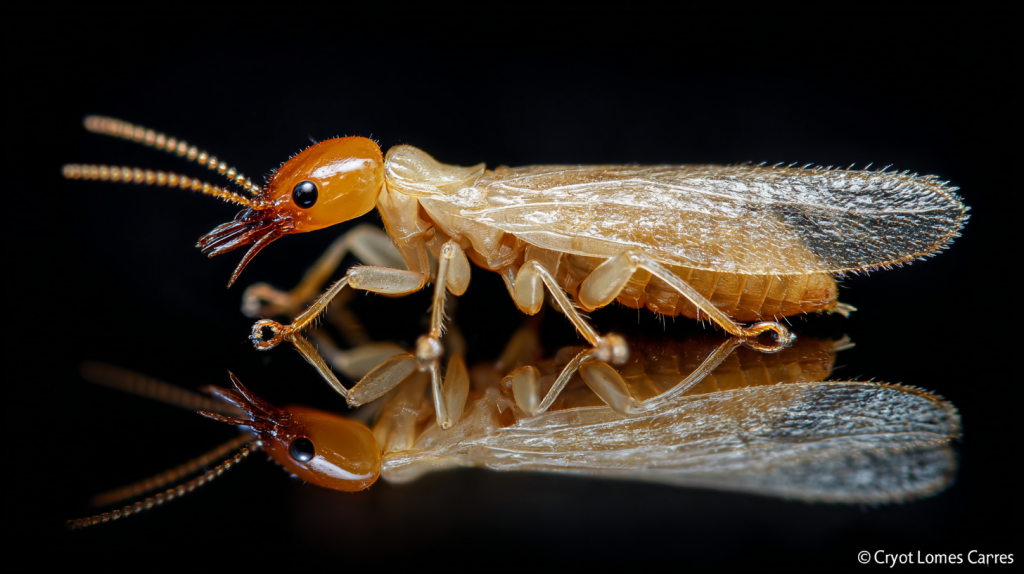
Table of Contents
If you live in Palmetto, FL and you’ve spotted little piles of what looks like coffee grounds or pepper flakes around your home, you may be dealing with drywood termites. And let’s be clear: these bugs don’t need dirt, don’t need water, and don’t need an invitation. They set up shop directly in the wood inside your home. So, how bad can it get? Let’s break it down.
Key Takeaways
- Drywood termites don’t need soil—they live and thrive entirely inside your wood.
- Swarming season in Palmetto is usually May through July, with peak activity in early summer.
- Infestations can hide inside trim, beams, furniture, and door frames.
- Frass (tiny six-sided pellets) is their calling card—if you see it, they’re in your walls.
- Treatments can range from localized spot treatments to whole-home fumigation, depending on how far they’ve spread.
- These pests can take years to cause visible damage, but once they do, repairs get expensive—fast.
Why Palmetto Homes Are a Termite Buffet
Palmetto’s waterfront vibes and humid air (we’re talking humidity often above 70%) make it paradise not just for us, but for termites too. Even a reinforced concrete house isn’t safe—trim, doorframes, attic beams, and built-in wood shelving are all fair game.
Your home may look solid from the outside, but inside, drywood termites can carve out galleries that crisscross the wood grain, weakening beams and trim without you realizing until it’s advanced.
How Drywood Termites Behave
- Colony Living: No dirt tunnels here. Colonies live entirely inside the wood they eat, which means infestations stay hidden until signs like frass or swarmers show up.
- Swarming: Those winged bugs you saw around the light on a June night? That’s a mating flight. They’re out starting new colonies while you’re trying to watch Netflix.
- Gallery Damage: Their tunneling isn’t neat. They chew across wood layers, weakening both soft and dense parts, which makes structural wood lose strength faster.
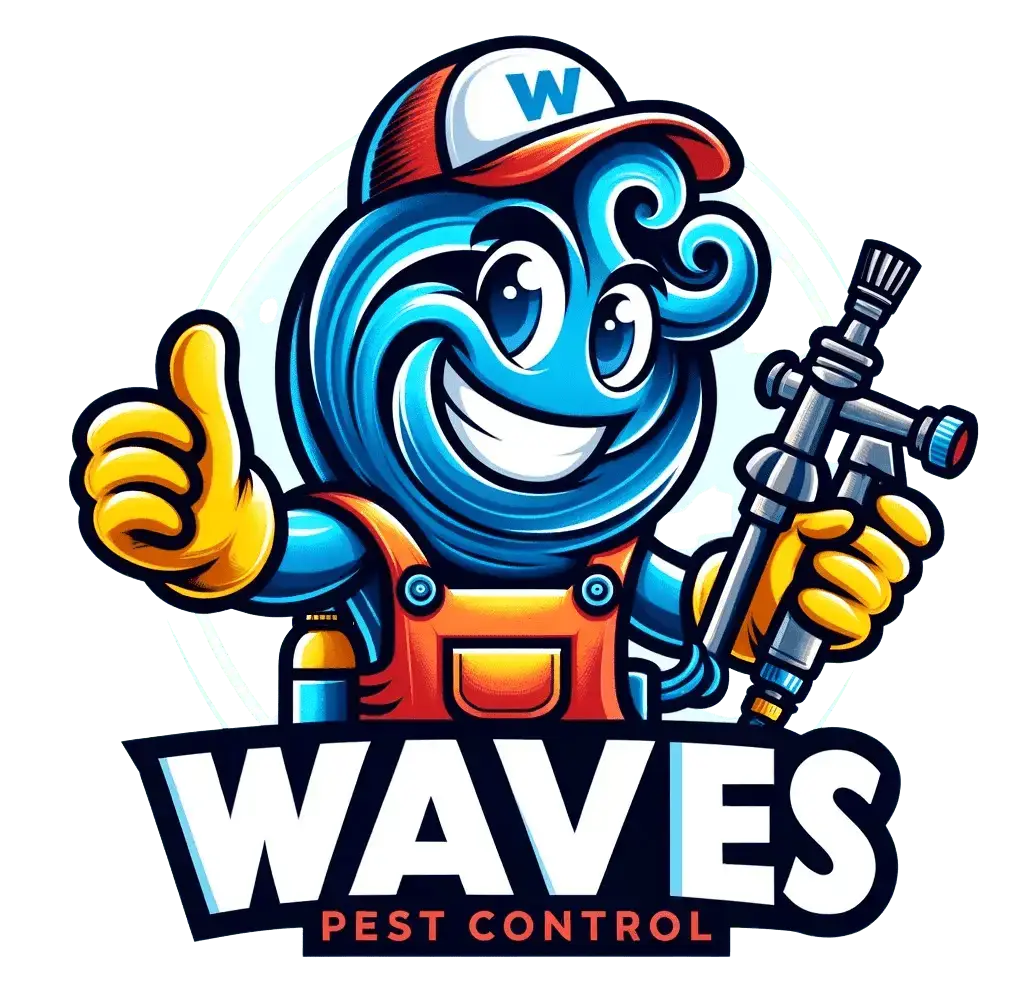
Get Pest-Free Today!
Trust Waves Pest Control for expert pest solutions in Florida. Call now or request your free quote online!
Request a QuoteWhat to Watch For in Your Palmetto Home
- Swarmers: Tiny winged termites about 4–6 mm long. Usually spotted around windows or lights in late spring and summer.
- Frass: Six-sided pellets that look like sand, pepper, or coffee grounds. They push it out of kick-out holes, which is their not-so-subtle way of saying, “Yep, we’re here.”
- Wood Damage: Hollow-sounding wood or blistered paint. Termites can use up to 98% of certain materials like filter paper, while still doing plenty of damage to pine or Douglas-fir.
The Science of Their Appetite
Think termites are small? Sure. But they eat daily. Research shows:
- Incisitermes immigrans nymphs eat about 0.2 mg of wood per day.
- Cryptotermes brevis nymphs eat about 0.15 mg per day.
- Each one produces about 0.7–1 pellet of frass per day, depending on the wood type.
Multiply that by thousands of termites over years, and you’ve got the recipe for costly repairs. Scientists can literally measure colony size by weighing the droppings. Gross, but genius.
Why Acting Fast Matters
Unlike subterranean termites, drywood colonies don’t have an external nest. That means the infestation is fully inside your house. On the upside, this allows for precise treatments—like heat treatments or injections—aimed at the areas with frass. On the downside, if you don’t act quickly, the colony can spread from one room to another.
In Palmetto, that usually means starting with localized treatments if caught early—or fumigation if the infestation is widespread. Both options are way cheaper than repairing collapsed beams or replacing built-ins.
Frequently Asked Questions (FAQs)
What time of year are drywood termites most active in Palmetto, FL?
Their swarming season runs May through July, with activity peaking in June. That’s when winged termites go looking for new places to infest.
How do I know if I have drywood termites?
Look for frass (tiny six-sided pellets) near windows, baseboards, or furniture. Also, check for swarmers or wood that sounds hollow when tapped.
Can drywood termites damage a concrete home?
Yes. Even in a reinforced concrete home, they’ll target wooden trim, closets, shelves, and attic beams. If there’s wood, they’ll find it.
What treatments work best for drywood termites in Palmetto?
For small infestations, spot treatments or injections into galleries may be enough. Larger infestations often require fumigation.
How much wood can a termite colony eat?
One termite eats only fractions of a milligram a day, but multiplied by thousands over years, the damage is major. Colony droppings can even be measured to estimate infestation age.

